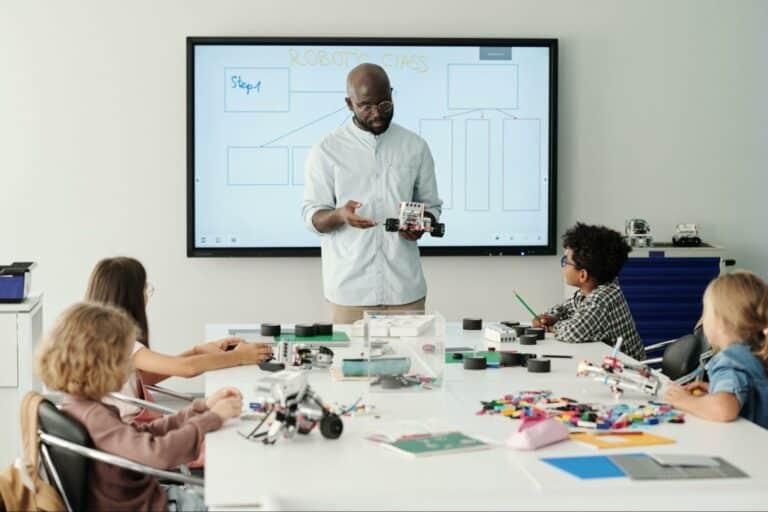Unlocking Student Success: Integrating SEL into the Digital Classroom for enhanced Learning
In today’s rapidly evolving educational landscape, student success hinges on more than academic achievement alone. As virtual learning environments become the norm,one approach stands out for its holistic impact: Social-Emotional Learning (SEL) in the digital classroom. By integrating SEL into online learning, educators can cultivate student engagement, resilience, and well-being—unlocking unparalleled potential and preparing learners for a thriving future.
What is SEL, and Why Is it Crucial in the Digital classroom?
Social-Emotional learning (SEL) is the process of developing self-awareness, managing emotions, building positive relationships, and making responsible decisions.While SEL has traditionally been a cornerstone of in-person instruction, its role in digital education is more vital than ever.
- Remote learning can create feelings of isolation, anxiety, or disengagement.
- students need tools to manage their emotions, communicate effectively, and adapt to new learning environments.
- integrating SEL practices online fosters a sense of community, increases motivation, and supports academic and personal growth.
Ultimately, SEL integration in digital classrooms not only supports academic achievement but also nurtures the whole child.
Benefits of Integrating SEL into the Digital Classroom
The benefits of SEL in online learning extend far beyond the academic realm. Here are some key advantages:
- Improved Academic Performance: SEL builds a supportive surroundings, leading to better concentration, participation, and results.
- Enhanced Digital Interaction Skills: Students learn how to navigate online interactions respectfully and productively.
- Stronger Classroom community: SEL fosters a sense of belonging, even when students are miles apart.
- Resilience Against Stress: Students are equipped to manage anxiety, adapt to changes, and handle setbacks with greater ease.
- Better Behavior and Reduced Conflicts: Proactive SEL strategies reduce misunderstandings and promote empathy in virtual interactions.
- Long-Term Life Skills: The emotional intelligence gained through SEL is invaluable in both academic and real-world contexts.
Practical Tips for Integrating SEL into Your Digital Classroom
Bringing essential SEL strategies to your digital learning environment doesn’t have to be complicated. Here’s how educators can start fostering social-emotional skills—even from a distance:
1. Begin each Session with a Check-In
- Use polls, emojis, or open-ended questions to gauge students’ feelings.
- Create a “mood board” or use SEL apps to track emotions.
2. Foster Connection Through Collaborative Activities
- Utilize breakout rooms for small-group discussions or peer feedback.
- assign projects that encourage teamwork and problem-solving.
3.Incorporate Mindfulness and Reflection
- Start or end lessons with short breathing exercises or guided meditations.
- Encourage journaling or video diaries to help students process their experiences.
4. Model and Teach Empathy Online
- Use role-playing activities or virtual scenarios to practice outlook-taking.
- celebrate kindness and collaboration through digital “shout-outs” or certificates.
5.Integrate SEL into Digital Curriculum
- Weave SEL competencies (such as self-awareness and relationship skills) into lesson objectives.
- Leverage online resources, videos, and interactive activities designed for SEL progress.
Quick SEL Tools for the Digital Classroom:
- Flip (formerly Flipgrid): For reflective video responses and peer feedback.
- Nearpod: For interactive SEL lessons and virtual check-ins.
- Padlet: For gratitude boards or digital journaling.
- ClassDojo: To reward SEL skills and reinforce positive behavior.
Case Studies: SEL Success Stories from digital classrooms
Let’s explore how real educators are transforming virtual learning with SEL strategies:
Case Study 1: Elementary School Goes Digital with daily Check-Ins
Mrs. Rivera, a 3rd-grade teacher in Texas, implemented morning SEL check-ins via Google Classroom. Using emoji polls, students shared their moods each day. The result? Increased participation and a noticeable boost in student confidence, as children felt “seen” even through a screen.
Case Study 2: High schoolers Build Empathy through Virtual Role Play
In Ohio, an English teacher assigned students to role-play literary characters facing modern dilemmas using a discussion board.This digital SEL activity deepened engagement, fostered thoughtful dialog, and improved peer relationships as students practiced empathy online.
Case Study 3: Mindfulness Moments Improve Focus
At a California charter school, educators began each lesson with a two-minute breathing meditation. Both student surveys and test scores showed not only improved focus but reduced stress, amplifying academic gains in the remote setting.
Overcoming Challenges: SEL Implementation Tips for Educators
While integrating SEL into a digital learning environment offers immense rewards, it does come with challenges. Here’s how to sidestep common roadblocks:
-
Challenge: Limited Student Engagement
Solution: Use interactive tools,gamify SEL activities,and provide regular feedback to keep students motivated.
-
Challenge: Time Constraints
Solution: Integrate SEL into existing lessons instead of adding separate sessions.SEL isn’t “extra”—it’s essential.
-
Challenge: assessing SEL Gains
Solution: Use digital journals, student reflections, or anonymous surveys to track SEL growth alongside academic progress.
-
Challenge: Building Trust Remotely
Solution: Maintain consistency,communicate openly,and show genuine interest in each student’s well-being.
First-Hand perspectives: Voices from the virtual Classroom
“The biggest takeaway? When I take five minutes to connect with my students emotionally, engagement goes up and so does learning. Relationships matter—online,too!”
– Ms. K. Johnson, Middle School Teacher
“As starting our weekly ‘Wellness Wednesdays’ online, my class feels less stressed and more supportive. SEL has changed our virtual classroom for the better.”
– Mr. G.Liu, 5th Grade Teacher
Such testimonials spotlight the tangible impact that SEL integration can have in digital classrooms, transforming not just learning outcomes, but student well-being and satisfaction as well.
Conclusion: Elevate Learning by Prioritizing SEL in Digital Classrooms
As educators and school leaders navigate the challenges of the digital age, weaving Social-Emotional Learning into the online classroom is a game-changer. by intentionally integrating SEL, you not only boost academic achievement, but also nurture growth, resilience, and connectedness among students—regardless of distance.
Start small, stay consistent, and watch your students thrive.Unlock student success today by making SEL the heart of your digital classroom.

